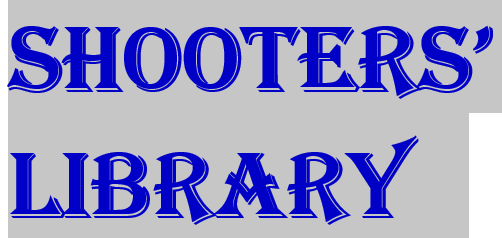
by Laura Trevelyan.
Published by Yale University Press, Dept. TGM.
Price: $28.00.
Available at many bookstores, or Amazon.
Written by the great-great-great-granddaughter of Oliver Winchester, the author is well fitted to write this history of one of the best-known firearms lines in history. Married to an Englishman, she has held the position of BBC News anchor and correspondent in New York City for more than a score of years, in addition to authoring at least one other historical book.
This 264-page hardbound volume is basically a volume on the people behind the Winchester guns, and not on the actual arms. It contains the usual acknowledges, a list of the 24 illustrations, an introduction, a family tree chart, six chapters starting with The Damn Yankee Rifle and ending with Aftermath. There are also Notes, a bibliography, and a six-page index.
Many readers may be surprised to learn the truth about the Winchester house in San Jose, California, and why modern firearms bearing the Winchester name, are not manufactured by
Winchester. By late 1931, the original Winchester arms were a Western Cartridge Company product, as the Winchester line of ammunition is still. Since that time arms bearing the Winchester name have been produced by a number of firms, including U. S. Repeating Arms. Today, Winchester arms are being produced in Belgium, Portugal, Turkey and possibly elsewhere, but not in Connecticut, U.S.A. Many of the arms are John Browning designed, so Belgium production seems logical, but the quality of the other produces is up to original Winchester standards. With modern production equipment and materials, today’s Winchesters may even be better.
Each of the chapters is interesting to read, but for those reader’s wanting to know more about the infamous Winchester House, the Lady of Mystery chapter should clarify the subject—both the Llanda Villa (the house) and the woman who owned it—Sarah Winchester. In 1923, following Sarah’s death, the Villa contained 160 rooms, 2,000 doors, 10,000 windows, 47 stairways, 47 fireplaces, 13 bath rooms, and 6 kitchens, a bell tower, Tiffany stained glass windows, and untold skylights. (According to James Perkins, a carpenter who worked on the house for years, most of the irregular, quirky features were added after Sarah Winchester died.) The short-step three-inch steps on stairways were built because of Sarah’s arthritis in later years and her inability to step the normal height, and while such might be considered quirky, it was Sarah’s way of being practical.
This is a most interesting book, and while based on guns, it is not a book on guns; several models—Henry, 1873, 1876. 1892. 1894, the ill-fated 1911 shotgun, plus others, are mentioned or shown being held— but not discussed in any detail. It is a history book of the best sort on the rise and fall (?) of a family who manufactured guns.—Larry Sterett



